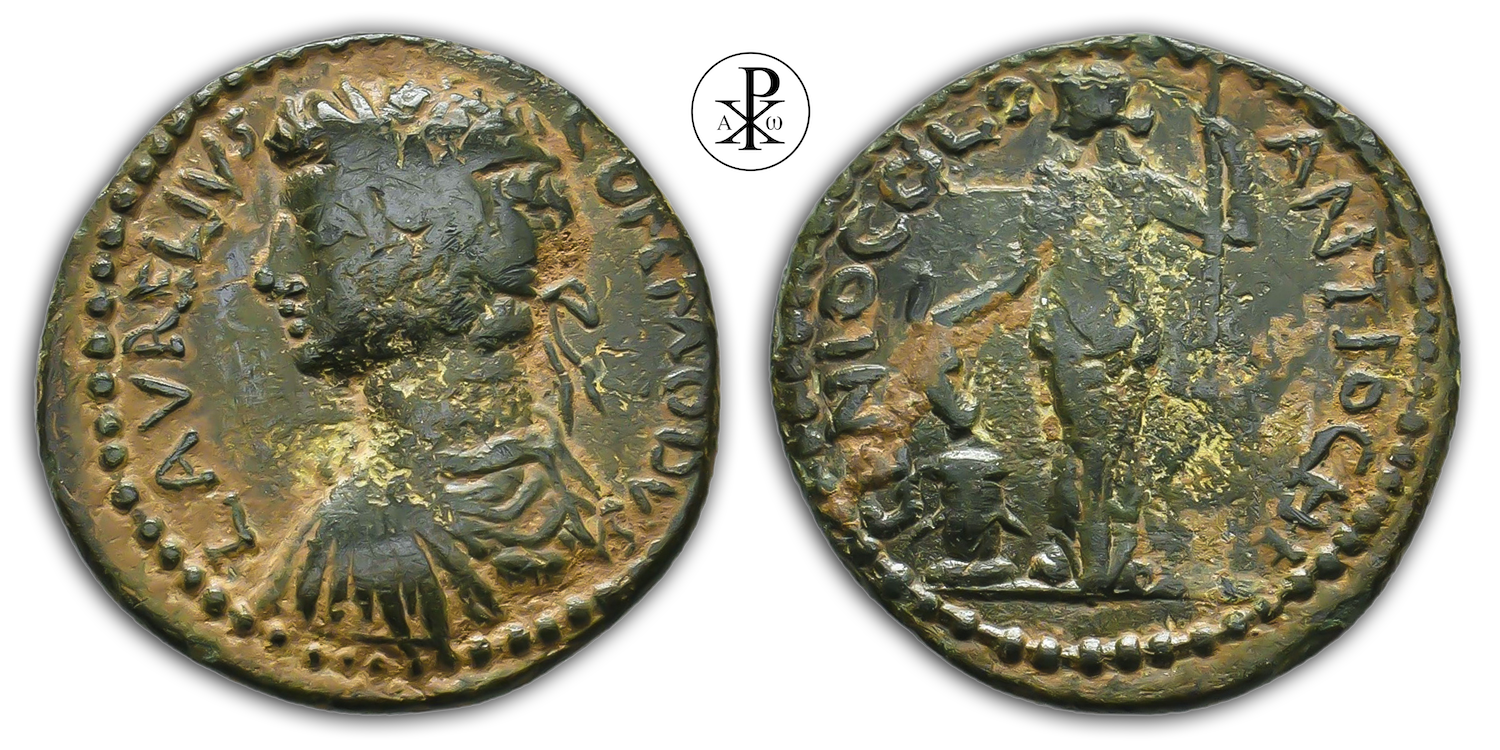Imperator Caesar Lucius Aelius Aurelius Commodus Augustus
Reign: Marcus Aurelius
Mint: Antiochia ad Pisidiam, Pisidia
Date: 177/180 AD
Nominal: Bronze
Material: AE
Diameter: 22.4mm
Weight: 5.33g
Reference: RPC IV.3 7367 (#2 this coin)
Reference: BMC 18
RPC Online: https://rpc.ashmus.ox.ac.uk/coins/4/7367
Rare: Specimens 2 (1 in the core collections)
Provenance: Bucephalus Numismatic Baar, Switzerland (Auction 18, Lot 322)
Pedigree: –
Obverse: Laureate-headed bust of Commodus (youthful) wearing cuirass and paludamentum, left
Inscription: L AVRELIVS COMMODVS
Translation: Lucius Aurelius Commodus
Reverse: Genius standing, facing, head, left, emptying cornucopia over altar, holding long sceptre
Inscription: GENIO COLo ANTIoCHI
Translation: Genius Colonia Antiochia
Comment: Antioch in Pisidia (Latin Antiochia ad Pisidiam, also Antiochia Caesarea or Colonia Caesarea) is an ancient city in Asia Minor in presentday Turkey. It is one of several cities founded by Seleucid rulers named Antiochos and named after them. As the boundaries of the Pisidian landscape were drawn differently over time, Antioch was at times not part of Pisidia. Pisidic Antioch was laid out with settlers from Magnesia on a strategic site near presentday Yalvaç. Following the insecurity problems generated by the Homanadensian wars and the death of Amyntas in 25 BC, Augustus commenced the establishment of colonies of legionary veterans in Asia Minor and, especially, in Pisidia. Those colonies provided room for the necessities of the growing veteran population resulting from the Late Republican civil wars and secured the new route called the via Sebaste that connected the Pamphylian coast with the centre of the peninsula. As shown by B. Levick, the site of Antioch played a key role at the end of a route that was also connected with the ancient ‘Royal road’ towards Lycaonia and Cilicia. The main bulk of colonists was detached from legio V Gallica and legio VII as attested by the epitaphs of veterans discovered near Yalvaç, and a series of coins in the reign of Vespasian recording their signa framing an eagle. The exact provenance of these veterans is disputed between Italy, southern France and even Hispania, but the onomastic evidence of Antioch since the foundation of the colony leaves no doubt about their western origin. Antioch in Pisidia quickly developed into one of the most important Roman cities in Asia Minor. As early as the 1st century AD, there is evidence of several senators who came from Antioch.
In Roman religion, the genius was the personal protective spirit of a man and an expression of his personality, his destiny and especially his procreative power. With the death of the man, the genius became extinct. Originally, the genii were ancestral spirits who watched over their descendants. From these developed personal guardian spirits to whom sacrifices were made and from whom one hoped for help and inspiration in difficult life situations. The festival of the genius was the birthday of the bearer. Since the genius was understood as a kind of principle of action, other collectives such as units of troops and colleges, but also places (genius loci) such as provinces, cities, markets and theatres could also have a genius. From there to the overarching genius of Rome (genius urbis Romae or genius populi Romani) is only a step. Finally, the genius Augusti was worshipped in the imperial cult. The genius was usually depicted with a beard (in later times also as a boy), with a bare upper body, a cornucopia and usually a sacrificial bowl. The genius loci often appears in the form of a snake. In Roman art, genii are also depicted as winged beings. The back of the provincial bronze presented here is the genius loci of the city of Antioch.
